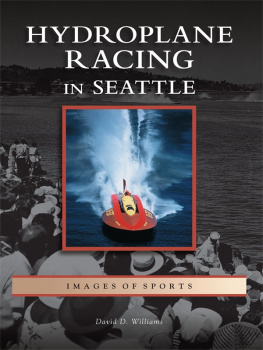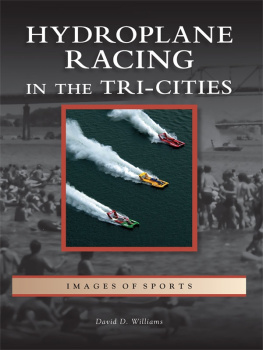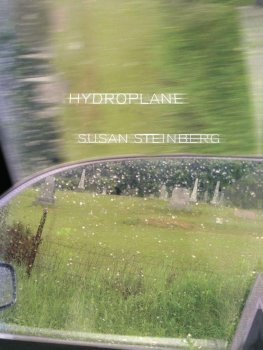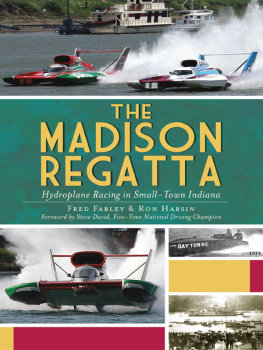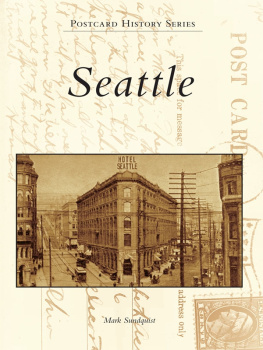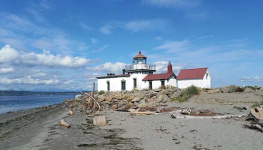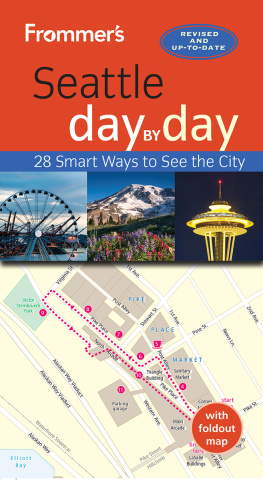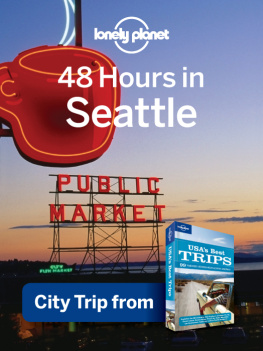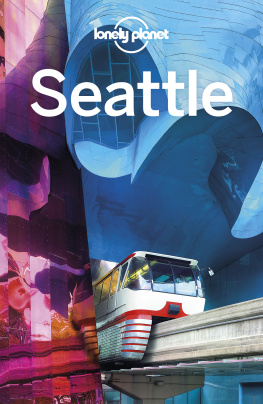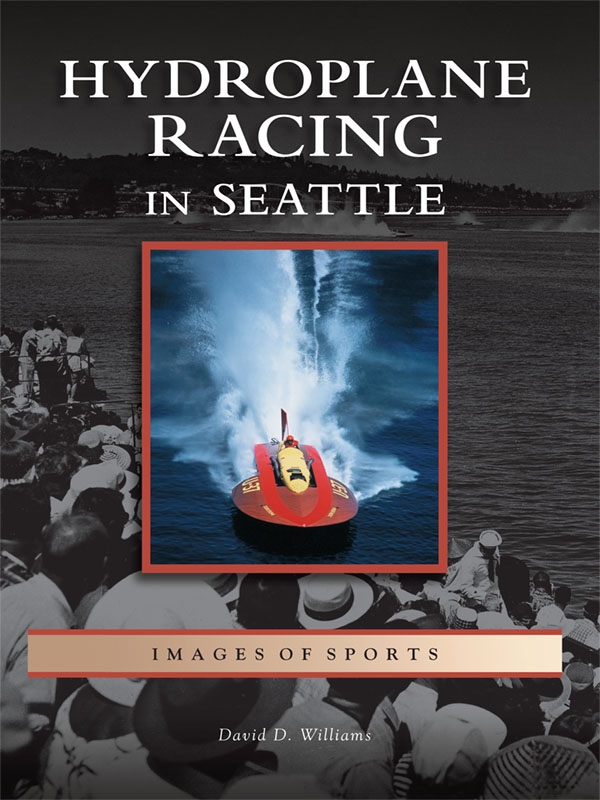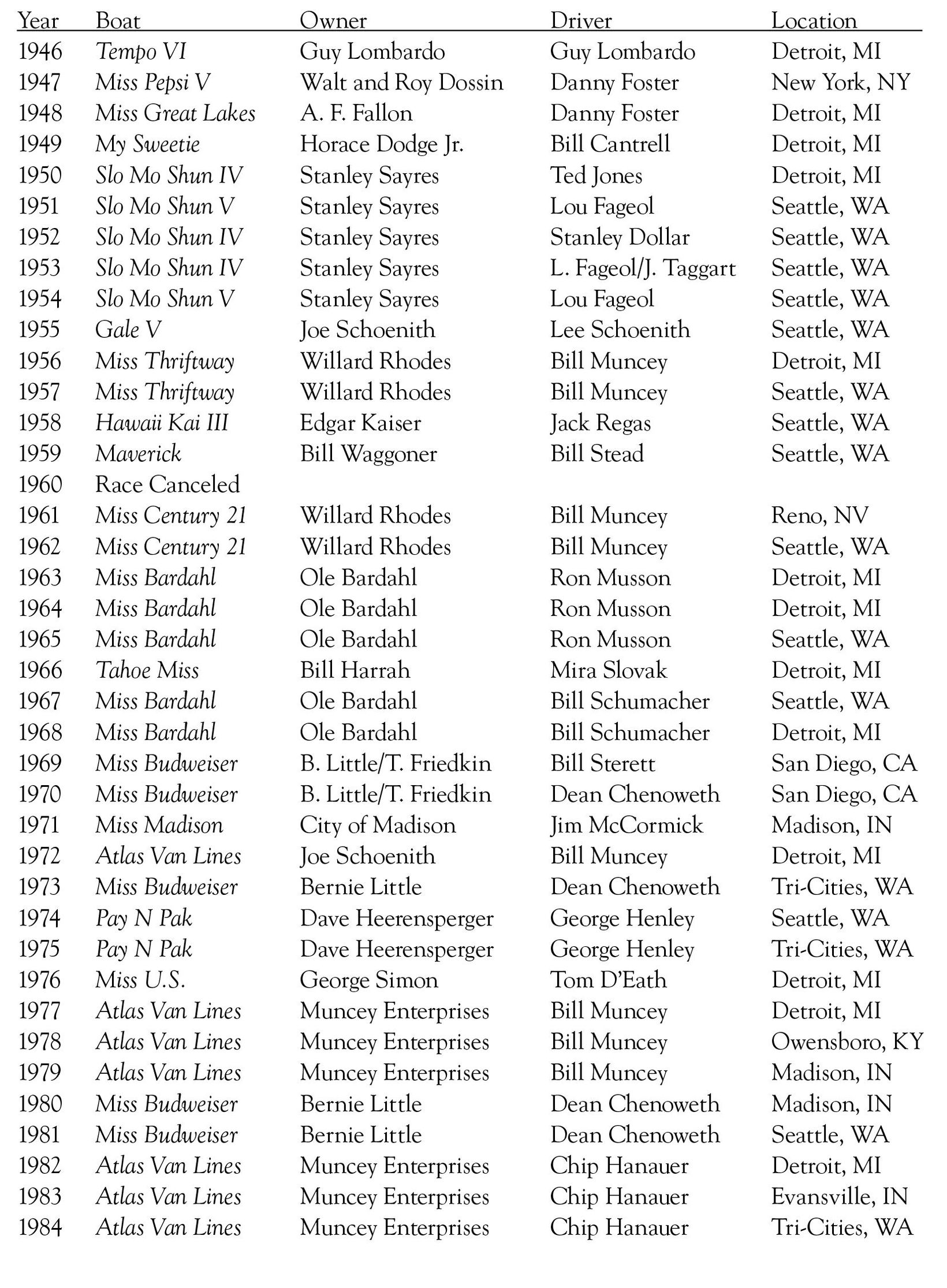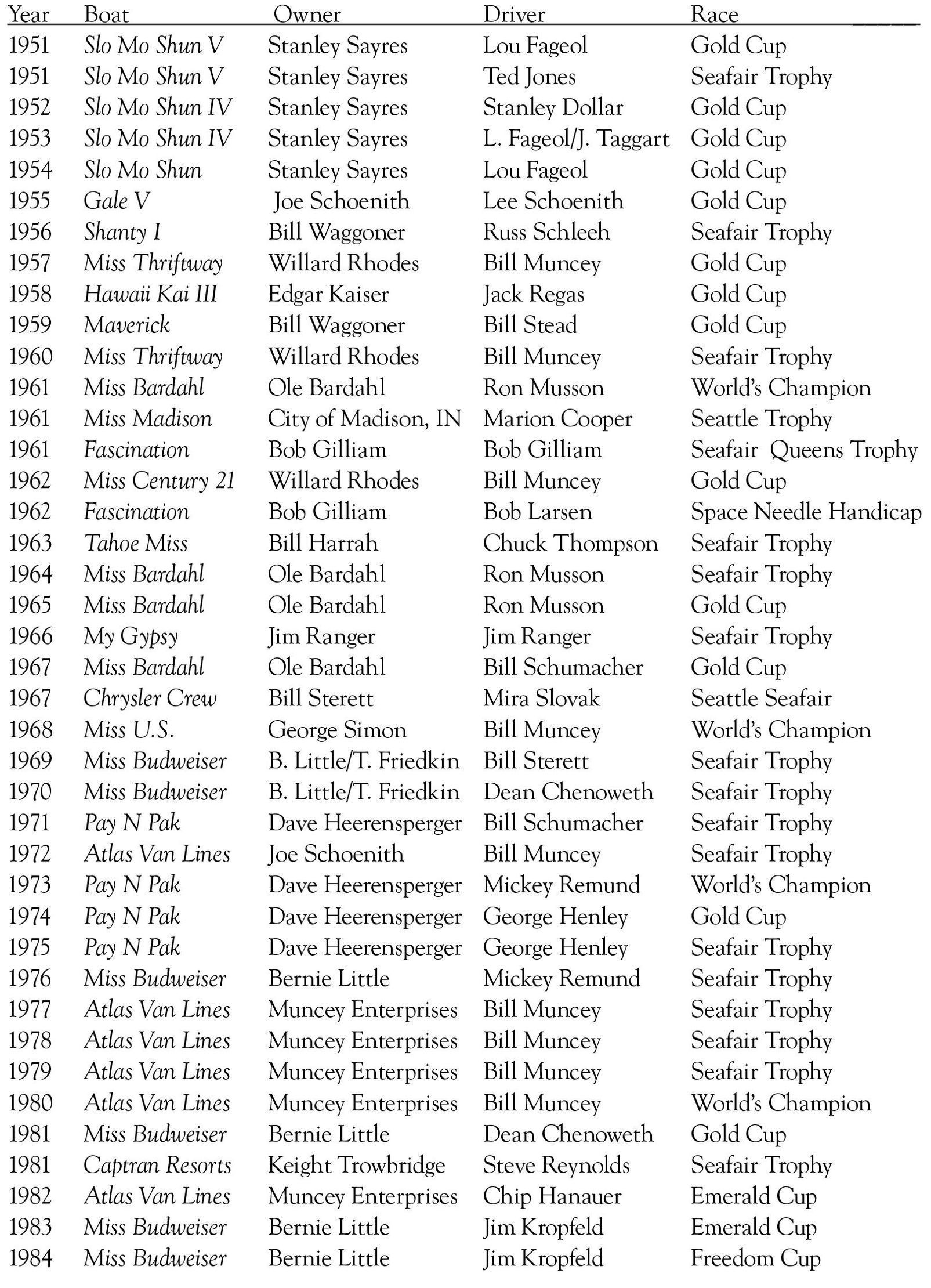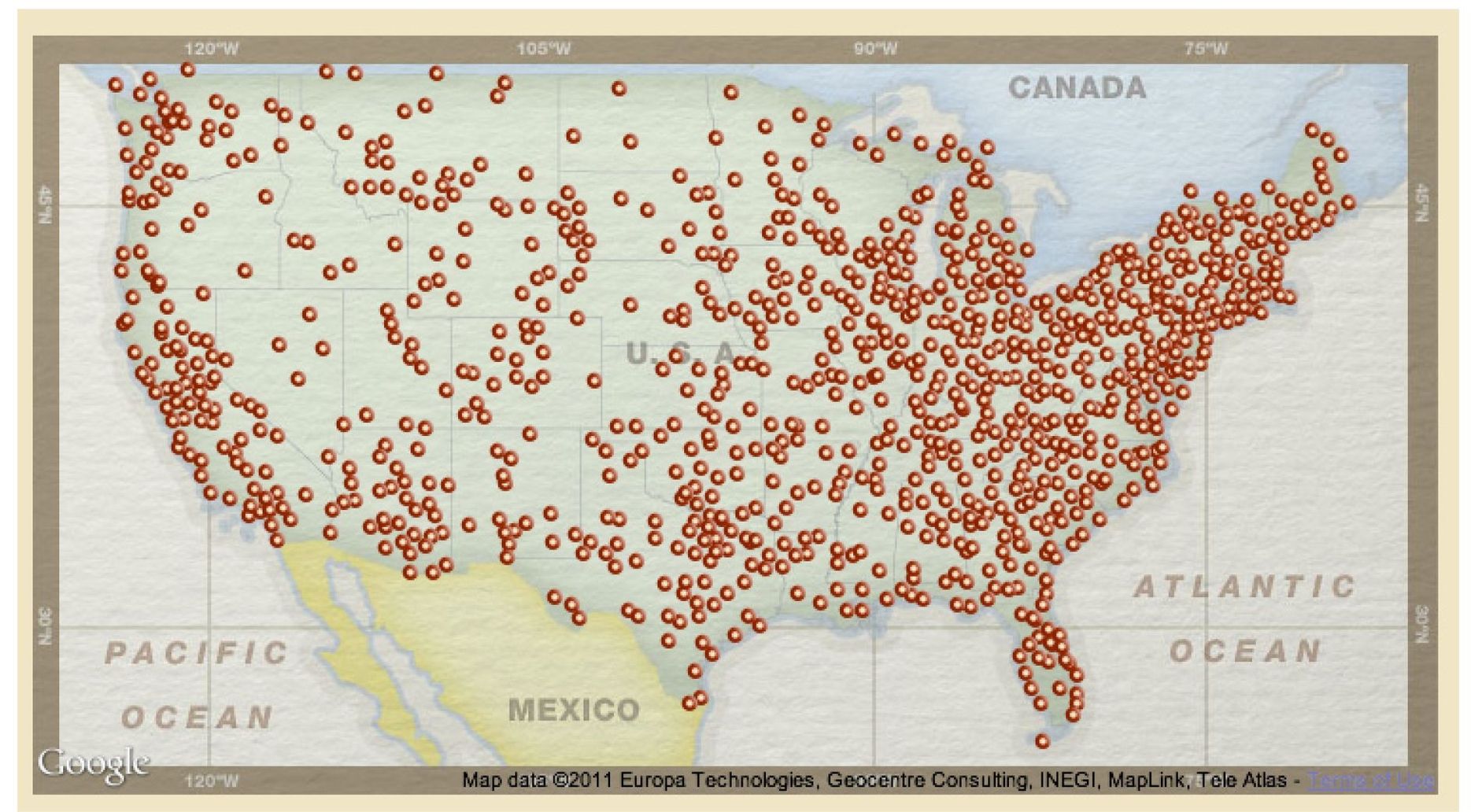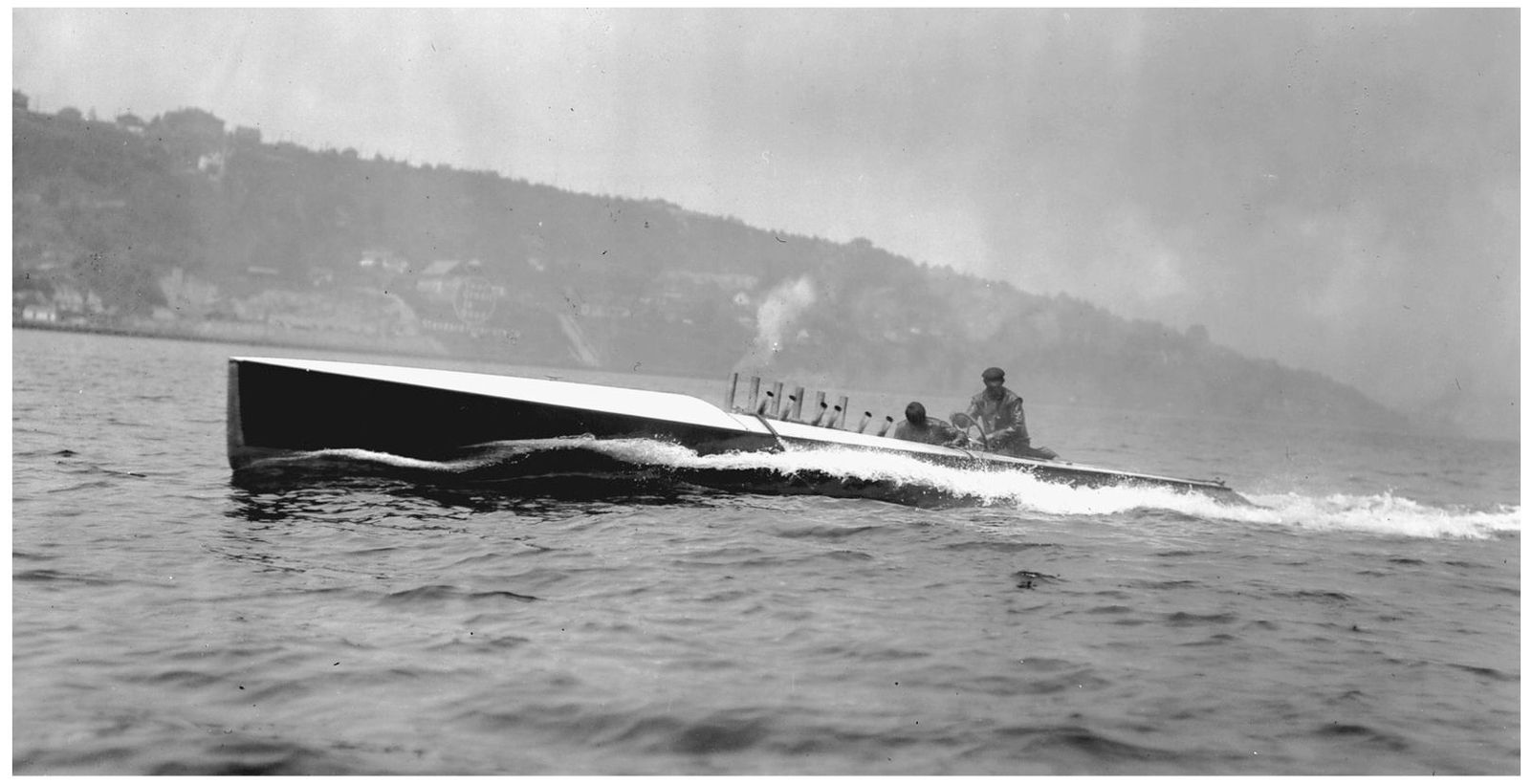19091948
THE BEGINNING
Any way that you look at it, 1909 was an important year for powerboat racing in Seattle. The Alaska Yukon and Pacific Exposition (AYPE) opened in June of that year to commemorate the Yukon gold rush. In the first week of July, the AYPE featured motorboat races. The premier event was the Pacific Coast Championship (PCC). This was the first big league race in Seattles history.
The PCC consisted of three heats spread out over a week from July 3 to July 10. Two entries were shipped from Portland by trainthe Wo lf II , owned by John Wolf and E. W. Spencer, and the Pacer , owned by R. O. Cox. Seattle was represented by the Spirit of Seattle, belonging to Ralph Casey and Charles Binkley. The race was three laps around a 10-mile course. It started near the current location of Husky Stadium, along Lake Washington to Leshi, then across the lake to Medina, and back to the AYPE dock. The Wo lf II easily won all three heats and claimed the honor of winning the first major powerboat race on Lake Washington.
In October of the same year, Tudor Owen (Ted) Jones was born. Ted would play an important role in making Seattle the hydroplane capital of the world.
The AYPE was a huge success and led to an annual celebration called the Golden Potlatch. The first Potlatch was held in 1911 and included many of the same elements that would make Seafair such a big hit 40 years later, including boat races. The Swan , owned and driven by Tony Jensen, won the race that year. Tony later founded Jensen Motorboat Works, and his son Anchor would play a central role in Seattles love affair with hydroplanes.
The Potlatch grew in popularity until 1913, when members of the International Workers of the World (WOBBLIES) got into a fight with sailors from the fleet. The scuffle turned into a riot that did not end until Seattle mayor George Cotterill took personal control of the police force. The festival struggled through one more year, but attendance was down in 1914 and the festival did not come back in 1915.
On August 10,1938, a group of inboard racers formed the Northwest Inboard Racing Association (NIRA). L. W. Van Dyke was the commodore and Ted Jones was the regatta chairman. In 1941, Ted was elected commodore. However, World War II brought the sport to a halt, and the club lay dormant until the end of the war. Ted continued as commodore through 1946.
The folks at NIRA were not the only Seattleites interested in fast boats. Stanley Sayres, a successful Chrysler dealer in Seattle, also had a passion for fast boats. In 1937, he bought a record-setting Ventnor 225 named Tops from Jack Pop Cooper of Kansas City. Stan renamed the boat Slo-mo-shun . In 1941, the boat caught fire and was destroyed. In 1942, Stan bought the Tops III from Cooper, renaming it Slo-mo-shun II . The boat was damaged while being shipped from Kansas City.
Stans business partner, Harry Jensen, suggested that Stan take the boat to his brother Tonys boatyard for repairs. Tonys talented son Anchor was well known for his superb craftsmanship. Anchor looked at the job, but he was too busy to take on new work. He recommended that Stan hire Ted Jones to make the repairs.
Ted was a supervisor at Boeing but had established a formidable reputation in the racing community by building his own fast 225 named Phantom , as well as a boat named Wasp for Glenn Van Dyke and a recorded-setting 135 named Avenger for Eddie Meyer of California.
Ted took on the job of rebuilding the sponsons, and Stan was happy with the results. The two racers kept in touch during the war years, and in 1947, Stan approached Ted about building a new boat. Ted offered to build a Gold Cupclass boat, but Sayres, prudently suggested they start with a 225 to be called Slo-mo-shun III .
When the Slo-mo-shun II had belonged to Pop Cooper, it had set the world record for 225s at 87.48 miles per hour. Stan and Teds goal for the new Slo-mo-shun III would be to reach 90 miles per hour. Teds design was basically a larger version of the Avenger . Ted began the construction in the basement of his home but was unable to complete the boat in the timeframe Sayres requested, so the boat was moved to Jensens and completed with Anchors help.
The Slo-mo-shun III never raced but apparently met the goal of hitting the 90-miles-per-hour mark. According to Anchor, No sooner had he (Stan) gotten use to the 90 mile an hour speed of the 225 Slo-mo-shun III than he was plagued with the urge to go faster.
THE BRIGHT RED SPIRIT OF SEATTLE , owned by Ralph Casey and Charles Binkley of the Seattle Yacht Club, represented Seattle in the Alaska Yukon Pacific Exposition Regatta. Construction of the Spirit of Seattle was completed shortly before the race and the new boat blues kept it from finishing all but one heat. During the regatta, it reached a top speed of 32.4 miles per hour before breaking down. By the following year, all of the bugs had been worked out and the Spirit won the Pacific Coast Championship, earning it the title of Fastest Boat on the Pacific Coast. (Courtesy Puget Sound Maritime Historical Society.)

